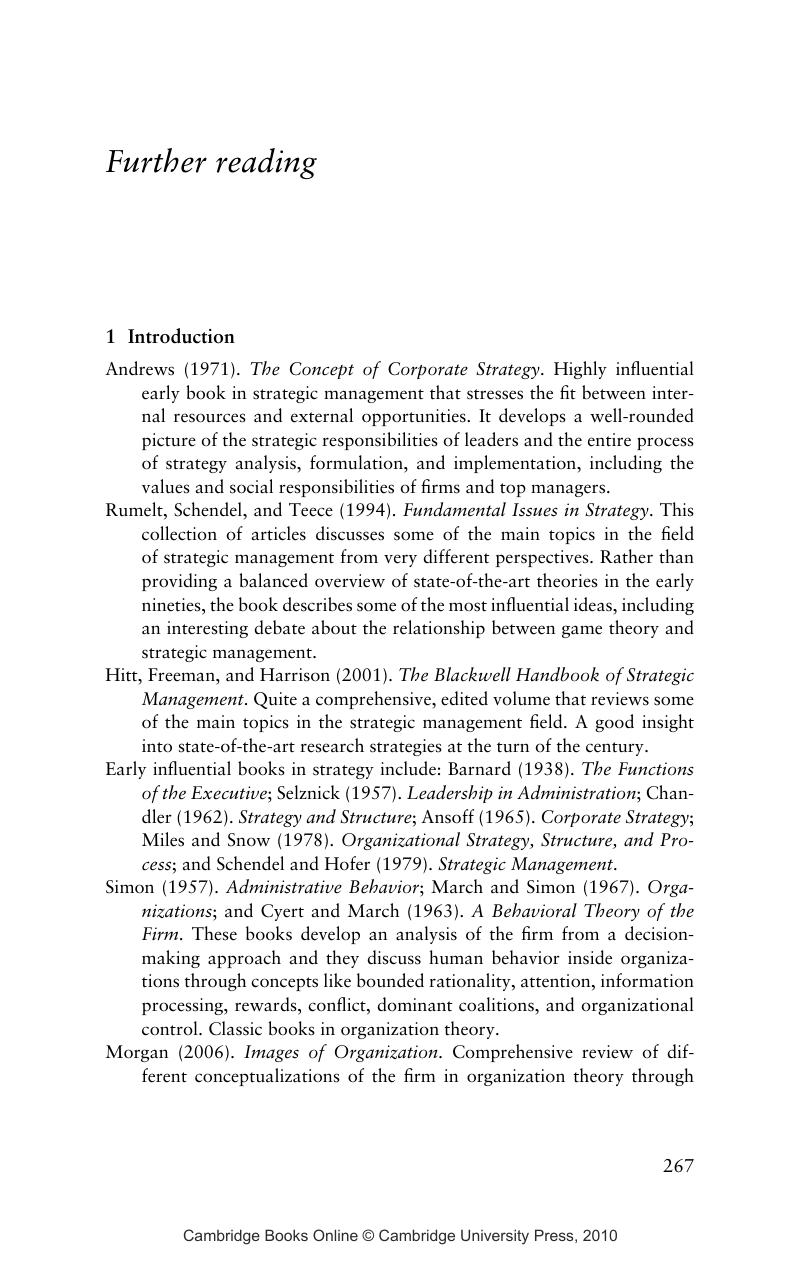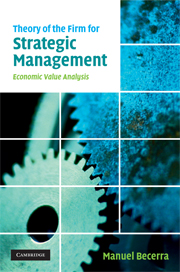Further reading
Published online by Cambridge University Press: 05 June 2012
Summary

- Type
- Chapter
- Information
- Theory of the Firm for Strategic ManagementEconomic Value Analysis, pp. 267 - 271Publisher: Cambridge University PressPrint publication year: 2009



